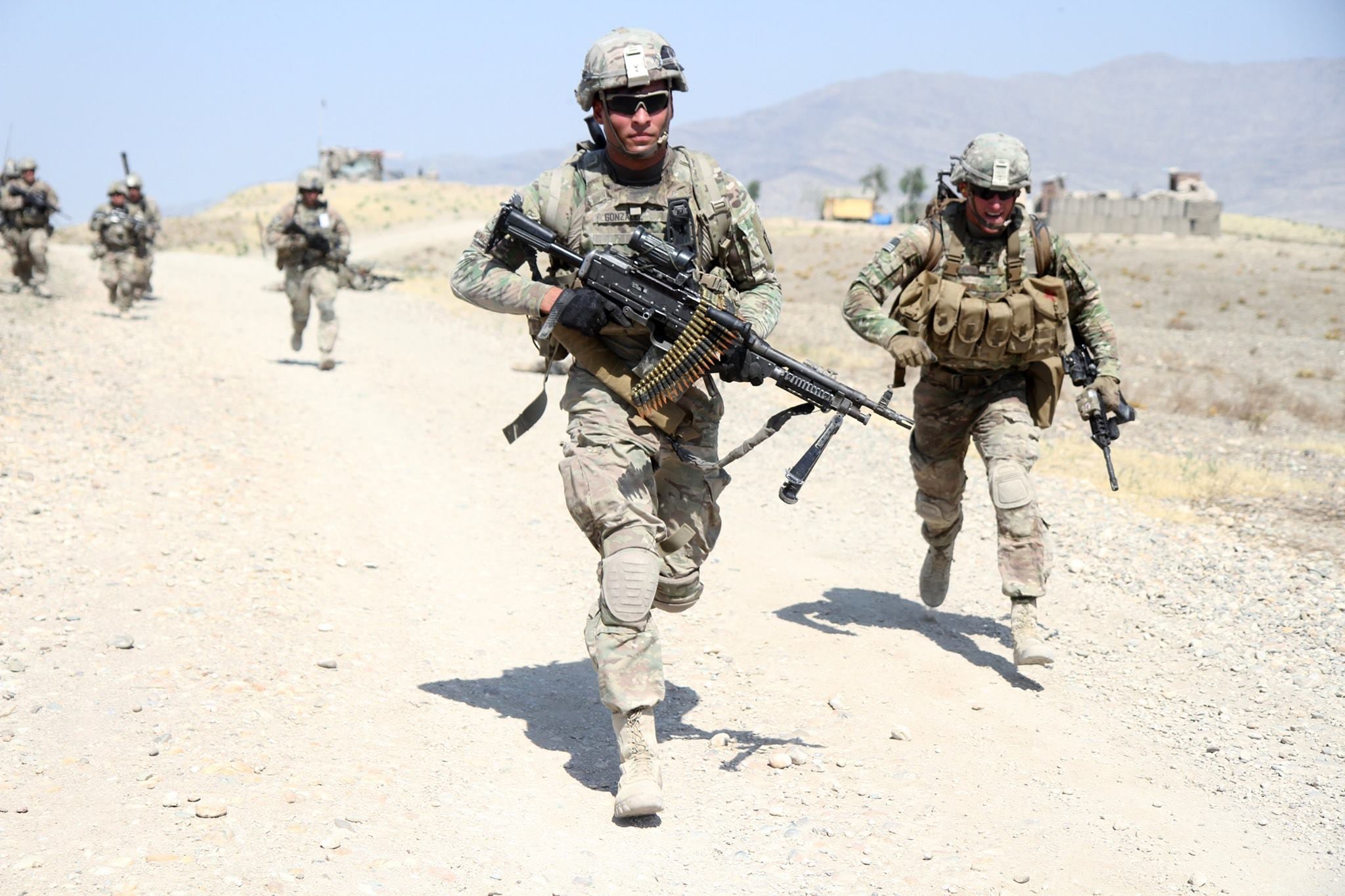When the 1st Infantry Division headquarters deployed to Iraq late last year, they brought with them about 100 Nebraska National Guardsmen.
The addition of the Guard soldiers is part of an Army initiative to round out its active-duty division and corps headquarters elements during deployments.
Known as Main Command Post – Operational Detachments, or MCP-ODs, these units are designed to beef up whittled-down active Army headquarters elements that were cut from about 700 people to 500 in fiscal year 2016 because of budget constraints. The MCP-ODs are meant to provide headquarters elements with the additional manpower for areas such as intelligence, operations and logistics.
The MCP-ODs were born out of a directive from former Army Chief of Staff Gen. Ray Odierno, who retired in August 2015, officials said.
"Rather than cut a headquarters, he said, 'I think we can still accomplish most of our missions with these headquarters, but when they deploy to a theater of operations, they'll have the ability to increase their capability and capacity,'" Col. Chuck Hensley, chief of plans for Army Forces Command, told Army Times in a Jan. 6 interview.
Paring down headquarters meant avoiding cuts to larger organizations, he added.
"[Odierno] didn’t want to cut Army National Guard divisions. We’d already gone from four corps to three with the inactivation of V Corps out of U.S. Army Europe," Hensley said. "He didn’t want to cut the regular Army divisions down below the 10 that we already have."
The MCP-ODs can have up to around 100 soldiers from Army Reserve or Guard units, primarily with military intelligence, signal operations, civil affairs, engineering and sustainer backgrounds.
"So it really started with [senior Army leaders saying] 'hey, I’m going to create a problem. Can we at the Department of the Army come up with a solution?'" Hensley said.
For example, the 1st Infantry Division MCP-OD has 91 Nebraska Guard soldiers and five civil affairs reservists, according to FORSCOM mobilization branch chief Chris Bagley.
Another MCP-OD, which has been alerted but hasn't deployed, has 75 Texas reservists preparing to deploy with III Corps' headquarters out of Fort Hood.

A group of soldiers from 3rd Brigade Combat Team, 101st Airborne Division sprint to their objective during platoon live-fire training in eastern Afghanistan. The Army is standing up detachments of National Guard and Army Reserve soldiers to augment active-duty division and corps headquarters when they're deployed.
Photo Credit: Capt. Charlie Emmons/Army
The Army plans to stand up a total of 13 MCP-ODs. So far the detachment for the 1st Infantry Division is deployed, while the 1st Armored Division and III Corps detachments have been alerted, Bagley said.
For their next deployments, the 10th Mountain Division will get a contingent of New York Guard soldiers, while Georgia Guardsmen will team up with the 3rd Infantry Division.
The partnerships are all local, Hensley said.
"What you didn’t want to have was a soldier who lived in Indiana and then have to drive or fly to Texas once a month for drill," he said.
In total, there will be nine Guard MCP-ODS and one Reserve -- with the 25th Infantry Division in Hawaii -- assigned to divisions. Reserve personnel will make up the MCP-ODs for the three corps headquarters. All of the detachments are scheduled to be stood up by the end of the year, Bagley said.
'Plug and play'
A commander "can ask for the entire unit, or he can pretty much go in and plug and play what sections of the MCP-OD that he wants to take with him to a deployment," Bagley said.
Cutting the size of its division and corps headquarters got the Army within budget and allowed units at home to maintain a dwell time of one year deployed and two years home. It was a better alternative than eliminating a division headquarters and asking those remaining to speed up their deployment cycles, officials said.
"If we have a requirement – which we do right now – for two divisions in Afghanistan and two divisions in Iraq, and you only have 10 regular Army divisions, two of which are tied up in the Pacific theater of operations, we didn’t want to cut headquarters because then we wouldn’t be able to generate the dwell to re-train, re-equip and re-man the units," Hensley said.
Now, the tricky part is lining up that one-to-two dwell time with the Guard and Reserve, who have a one-to-four dwell time.
Once stood up, MCP-ODs are a permanent element of the Guard or Reserve units who man them, so those personnel drill with their active counterparts and become devoted to them full-time.
If the MCP-OD members have civilian employment and are required to spend four years at home between deployments, FORSCOM has to figure out how to support that.
"So that’s one of the future friction points we’ll work through with the Guard and the Reserve. If in fact 1st ID has to deploy to another mission, how do we go about meeting their requirements if the MCP-OD is again required?" Hensley said. "We’re not going to increase the demand on the Guard and the Reserve soldiers. They're not going to have an extra burden because they’re part of the MCP-OD."
Meghann Myers is the Pentagon bureau chief at Military Times. She covers operations, policy, personnel, leadership and other issues affecting service members.




